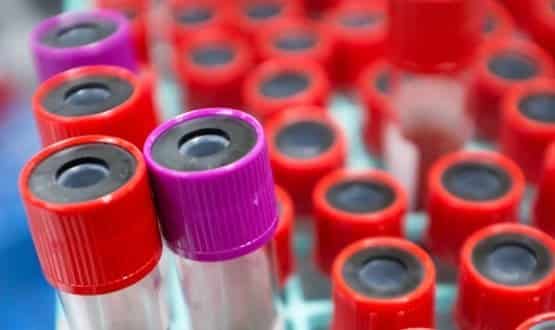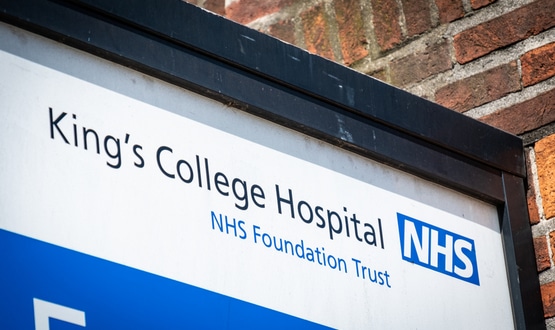Life and LIMS
- 21 November 2012

When SmartLab Exchange Network surveyed its global network of laboratory specialists in August this year, it highlighted three important drivers for investment in IT: improving laboratory efficiency; data and systems integration; and information sharing.
These priorities certainly apply in the NHS, where pathology is supposedly being transformed in line with the Carter report on pathology services in England that was published in 2006.
However, the complexities of delivering efficiency, integrating systems and data, and sharing information may not yet be apparent to decision makers.
Flexing muscles
The Carter proposals called for a consolidation of pathology services into “hubs” carrying out “cold” or non-urgent work and specialist “spokes” providing the “hot” or urgent work more locally.
This, Lord Carter of Coles suggested, would deliver efficiency savings and productivity gains. But achieving those required underpinning by IT systems to handle ordering, results reporting and to make the labs themselves more efficient.
While there has been a flurry of activity in developing these hubs and spokes, many of the regional plans have become mired in local politics and caught up in the NHS reforms, as emerging clinical commissioning groups start to get to grips with their workload.
Last month East of England, for example, delayed announcing details of its transformation programme to concentrate GP tests in two hubs until the “end of the year”.
As one independent source put it to eHealth Insider: “There is a lot of talk about the politics. CCGs are flexing their muscles and saying they want to be involved in making decisions that affect them and that, so far, have been made by strategic health authorities.
“But not so many people outside the world of pathology IT are aware of just how many technical challenges lie ahead.”
Poor IT leads to high-profile problems
An insight into just how important IT is to this agenda comes from a report this September from the not for profit research group Corporate Watch.
It highlighted a series of IT-related clinical incidents at GSTS Pathology, a joint venture between Serco, King’s College Hospital and Guy’s and St Thomas’s Hospital that is now bidding to take over work in East of England.
Corporate Watch’s report noted: “A malfunctioning IT system has caused particular problems. The performance review for June 2011 describes a ‘serious problem’ after the IT interface for blood group analysers contracted a virus and was shut down for four days.
“In January 2012 a patient was given ‘inappropriate blood’ when their medical history was not flagged up by the system.
“In May 2012 patients’ kidney damage results were calculated incorrectly after a ‘software fault’. The September 2011 performance review complains of the pre-operative blood transfusion interface failing at the same time every week.”
GSTS Pathology had promised to upgrade the IT system – a crucial part of modern pathology but, says Corporate Watch, its annual accounts show £2.7m had to be written off in 2011 due to “potential clinical uncertainty” caused by its new system.
GSTS Pathology claims now to have turned the corner on these and other problems that contributed to it reporting a £6m loss in 2011.
But the lesson remains: there is a lot at stake in modernising NHS pathology and much of the success hinges on good IT.
Good news: the lab test catalogue has arrived
Which is why there has been a lot of work going on in the background by LIMS and order comms suppliers, pathology IT specialists, and the Royal College of Pathologists; all of which have been building some of the IT building blocks on which successful transformation can be pinned.
So, first, a piece of good news. This autumn saw publication of the first release of the National Laboratory Medicines Catalogue, intended as the first SNOMED CT coded catalogue of lab tests.
Developed by the Royal College of Pathologists with the Department of Health and NHS Connecting for Health, it has been received with some enthusiasm – and not a little relief.
If put into use it will mean all labs reporting test results using the same parameters – in other words patients and doctors will no longer be faced with different looking numbers that actually mean the same thing because they report in different ways.
“It means everybody can look at the results of tests and all see the same thing,” says Archie Prentice, chair of the Royal College of Pathologists. “That will provide a degree of reassurance to patients and clinicians.”
“NLMC is enormously important in terms of providing a single meaning to test results,” says George Phelps, CSC’s pathology product manager.
His colleague, integration specialist Chris Smith adds: “It is not a driver for integration it is a fantastic enabler. It gives labs a common language or currency to do things. It makes so many other things possible.”
Innovation
In another example of innovation, CSC is getting ready to launch a system to support “intelligent routing” of cold samples in March next year.
“It will allow a test sample to be sent to the right place across the network depending on the time of day, the test requested or the consultant pathologist involved,” Philp says. “It’s all about delivering productivity and efficiency.”
Meanwhile, Sunquest is promoting its ICE order comms system to the NHS by highlighting how it can automate data entry, reduce errors, allow GPs who order tests to track them or deliver test results into patient facing portals.
ClinySis is concentrating on another aspect of innovation in pathology IT: adding value to the pathology service with knowledge-based tools to support clinical decision-making and better reporting.
“We are seeing clinical pathologists getting more involved in point of care,” says Donald Saum, business development director for CliniSys.
“For example, pathologists taking a central role in recalling patients when their test results require clinical intervention. There is an awareness of the need not to box pathology into the traditional LIMS environment but rather to open it out.”
And everyone is looking at how to respond to the growing demand for patients to have access to their own results.
But while there are undoubtedly some elegant solutions out there and some pathologists making innovative use of them, there also is a deep unease about the challenges that lie ahead.
Financial barriers
Both Sunquest and CliniSys argue that while clusters may not have the money for a new, single LIMS now, they need a tactical and strategic road map that will get them to one.
As LIMS providers, perhaps they would say that, wouldn’t they? But Saum makes a convincing case.
Consider your “typical” pathology network; multiple GP practices, with a variety of order comms systems, and multiple departments, all feeding into hubs in several hospitals, with a variety of LIMSs.
Each of these LIMS has interfaces with multiple systems – cancer registeries, sexual health, back to GP practices, the patient administration system, and so on and so on.
Add in the complexity of operating in a system where patients may be identified by their NHS Number and one or more hospital numbers, and the complexity and expense of systems integration and managing interfaces becomes enormous.
“We are able to link these data, but in a network with multiple PAS systems in multiple trusts that do not use a unique identifier for each patient… it is a challenge,” says an understated Saum.
“At CliniSys we believe that if a true integrated pathology network provider is going to be able to receive information and provide it to multiple care settings, it must have a single system.”
Getting IT into the debate
The optimist in Saum hopes that the widespread GP use of the NHS Number will drive its availability in acute settings; the realist recognises that new LIMS are not on the agenda for most trusts at the moment because it is just too big a capital expenditure.
“My nervousness is that networks are looking to do this piece by piece and they need a tactical and strategic road map that will take them towards a single LIMS,” he says.
Tom Wilson, director of international sales and strategies at Sunquest agrees. “The ideal situation would be if we had one LIMS and could share data across the whole of the business; but that is a longer term plan.”
So while clinical commissioning groups and SHAs wrangle about the politics of pathology transformation, there is a real need to focus on the nitty-gritty of how to manage the costs of integration – and to manage the patient safety aspects. It’s time pathology IT came to the centre of the debate.




